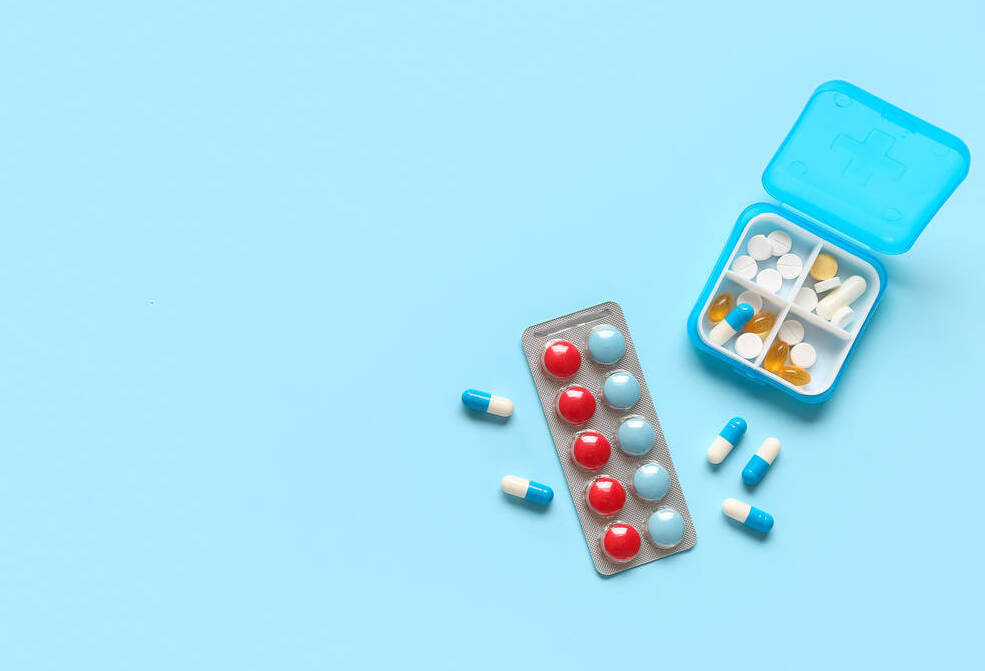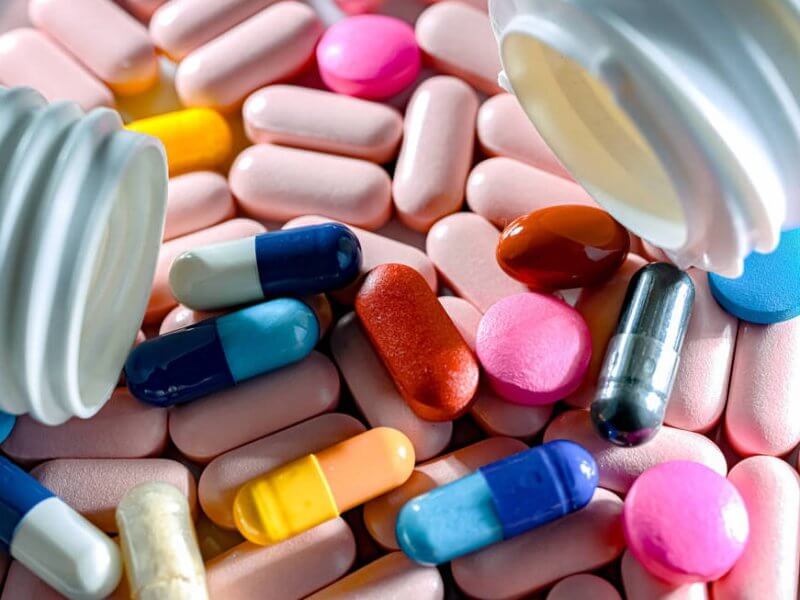195 total views
Introduction to Cognitive Enhancers
Cognitive enhancers, also called nootropics or “smart drugs,” have become increasingly popular over the last two decades. These substances are designed to improve specific mental processes such as focus, concentration, working memory, and overall productivity. While caffeine and herbal supplements like ginkgo biloba have been used for centuries, modern pharmacological agents like Modafinil and Methylphenidate (Ritalin) dominate current discussions about pharmaceutical enhancement.
The interest in cognitive enhancers isn’t limited to clinical populations. While both Modafinil and Methylphenidate were developed and approved to treat medical conditions such as ADHD and narcolepsy, their off-label use among healthy individuals has become common. Students preparing for exams, professionals handling high-pressure workloads, and even military personnel have explored the benefits of these drugs.
One reason for their popularity is the competitive edge they promise. In a society that prizes productivity, the ability to stay alert longer, focus more intensely, or process information more quickly is appealing. However, alongside these benefits come questions about safety, ethics, and long-term consequences.
In this review, we’ll focus specifically on Modafinil and Methylphenidate, examining their mechanisms, clinical applications, and comparative effectiveness. We’ll also address side effects, accessibility, and lifestyle considerations, providing a full evidence-based perspective on which drug might be better suited for different needs.
What is Modafinil?
Modafinil is a wakefulness-promoting agent first developed in France in the 1970s. Unlike classical stimulants such as amphetamines, Modafinil is often categorized separately due to its distinct pharmacological profile. Its reputation as a “smart drug” grew rapidly after studies highlighted its ability to improve focus, executive function, and resistance to fatigue without causing the intense euphoria associated with other stimulants.
Mechanism of Action of Modafinil
Unlike Methylphenidate, which directly blocks the reuptake of dopamine and norepinephrine, Modafinil operates through a multifactorial mechanism. It subtly increases dopamine by inhibiting its reuptake, but it also acts on orexin (hypocretin) neurons in the hypothalamus, which regulate wakefulness. This explains why Modafinil promotes alertness without the jitteriness often caused by stimulants.
Research also suggests that Modafinil influences glutamate, histamine, and GABA pathways. This broader neurochemical effect may explain why users report improvements in planning, decision-making, and long-term concentration, rather than just a short-term boost in focus.
Approved Uses of Modafinil
The FDA and equivalent regulatory bodies in Europe have approved Modafinil for three primary conditions:
- Narcolepsy – reducing daytime sleepiness.
- Obstructive Sleep Apnea (OSA) – counteracting fatigue associated with disrupted sleep.
- Shift Work Sleep Disorder (SWSD) – helping individuals who work night shifts remain alert.
In these contexts, Modafinil is considered both safe and effective, often outperforming older treatments.
Off-Label Applications of Modafinil
Modafinil’s reputation as a nootropic largely stems from its off-label uses, which include:
- ADHD treatment (though not officially approved due to rare but serious dermatological side effects).
- Cognitive enhancement in healthy individuals.
- Managing fatigue in depression, multiple sclerosis, and chronic fatigue syndrome.
- Assisting military personnel and astronauts during extended missions.
While evidence supports its cognitive benefits, ethical debates continue. Is it fair for students or professionals to use pharmaceutical aids for an advantage? These discussions mirror those in sports around performance-enhancing drugs.
What is Methylphenidate (Ritalin)?
Methylphenidate, commonly known as Ritalin, was first synthesized in the 1940s and approved for medical use in the 1950s. It is one of the most prescribed medications for ADHD, especially in children and adolescents. Unlike Modafinil, Methylphenidate is classified as a central nervous system stimulant, closely related to amphetamines in both structure and effect.
Mechanism of Action of Methylphenidate
Methylphenidate primarily works by blocking the reuptake of dopamine and norepinephrine, leading to increased concentrations of these neurotransmitters in the synaptic cleft. This results in improved attention, reduced impulsivity, and greater ability to sustain mental effort.
The rapid surge of dopamine is one reason Methylphenidate has a higher risk of dependency compared to Modafinil. However, it is also this rapid action that makes it highly effective for treating ADHD symptoms.
Approved Uses of Methylphenidate
The primary FDA-approved uses include:
- ADHD (children and adults) – improving attention and behavioral control.
- Narcolepsy – promoting wakefulness in affected patients.
Unlike Modafinil, Methylphenidate is a Schedule II controlled substance in the U.S., reflecting its higher abuse potential.
Off-Label Applications of Methylphenidate
Beyond its official uses, Ritalin is sometimes prescribed for:
- Treatment-resistant depression.
- Cognitive dysfunction following brain injury.
- Fatigue associated with chronic medical conditions.
- Off-label enhancement of alertness and focus in healthy individuals.
While effective, its off-label use is more controversial due to dependency risks and possible side effects, especially in young populations.
Comparing Modafinil vs. Methylphenidate
Effectiveness in ADHD Treatment
For ADHD, Methylphenidate is the gold standard. Numerous studies have demonstrated its effectiveness in children, adolescents, and adults. Modafinil has shown promise, but the risk of rare but severe skin reactions prevented FDA approval for ADHD.
| Metric | Modafinil | Methylphenidate |
|---|---|---|
| Symptom Reduction | Moderate | High |
| FDA Approval | ❌ No | ✅ Yes |
| Use in Children | Not approved | First-line treatment |
| Risk of Dependency | Low | High |
| Long-Term Data | Limited | Extensive |
Cognitive Enhancement in Healthy Individuals
Modafinil is often referred to as a true nootropic, improving higher-order cognitive functions like planning and complex problem-solving. Methylphenidate, on the other hand, primarily enhances attention and working memory. This distinction makes Modafinil more appealing for professionals or researchers, while Methylphenidate may be more attractive to students needing sustained focus.
Onset and Duration of Action
- Modafinil: Onset in 30-60 minutes, lasting 12-15 hours.
- Methylphenidate: Onset in 20-30 minutes, lasting 3-8 hours depending on formulation.
The longer duration of Modafinil reduces the need for multiple doses but can also disrupt nighttime sleep if taken late.
Side Effects and Safety Profiles
| Category | Modafinil | Methylphenidate |
|---|---|---|
| Neurological | Headache, dizziness | Anxiety, nervousness, insomnia |
| Gastrointestinal | Nausea, dry mouth | Appetite loss, stomach pain |
| Cardiovascular | Mild increase in blood pressure | Elevated heart rate, hypertension |
| Other Risks | Rare skin rash (SJS) | Growth suppression in children, dependency |
In terms of safety, Modafinil generally has a more favorable profile for long-term use, though data is still being collected.
Long-Term Use: Risks and Benefits
When evaluating long-term use, the differences between the two drugs become more pronounced.
| Feature | Modafinil | Methylphenidate (Ritalin) |
|---|---|---|
| Drug Class | Wakefulness-promoting agent | Central Nervous System Stimulant |
| Onset of Action | 30-60 minutes | 20-30 minutes |
| Duration of Action | 12-15 hours | 3-8 hours (depending on formulation) |
| Abuse Potential | Low | Moderate to High (Schedule II) |
| FDA Approved For | Narcolepsy, OSA, Shift Work Disorder | ADHD, Narcolepsy |
| Off-Label Uses | ADHD, cognitive enhancement, depression fatigue | Depression, brain injury, fatigue management |
| Side Effects (Common) | Headache, nausea, insomnia | Appetite loss, nervousness, elevated heart rate |
| Serious Risks | Rare skin reactions (Stevens-Johnson Syndrome) | Dependency, cardiovascular strain |
| Cost | Generally higher, generic available | Lower, widely covered by insurance |
Both drugs require ongoing medical supervision for safe long-term use. Patients may build tolerance, necessitating dosage adjustments.
Cost and Accessibility
Accessibility and affordability can significantly influence which drug patients choose.
- Modafinil: Branded versions like Provigil are expensive, but generics (modafinil, armodafinil) have lowered costs. Still, insurance may not cover off-label uses.
- Methylphenidate: More widely available and affordable, often fully covered by insurance for ADHD treatment.
In countries where Modafinil is strictly regulated, patients may find it difficult to obtain legally, further limiting access.
Lifestyle Considerations and Patient Preferences
Beyond clinical factors, lifestyle preferences play a major role in determining the right drug:
- Professionals: Modafinil’s longer action makes it better for extended workdays.
- Students: Methylphenidate’s short duration allows targeted focus during study sessions.
- Athletes or performers: Either drug may help with performance, though ethical concerns persist.
Ultimately, individual response varies. Some patients tolerate one drug much better than the other, making personal experience and physician guidance critical.
FAQ
1. Is Modafinil safer than Methylphenidate?
Generally, yes. Modafinil has lower abuse potential and fewer cardiovascular risks, but rare skin reactions require caution.
2. Which works better for ADHD: Modafinil or Ritalin?
Ritalin (Methylphenidate) remains the gold standard for ADHD, particularly in children. Modafinil is not FDA-approved for ADHD.
3. Can healthy people use Modafinil or Ritalin?
Yes, but only off-label. Both drugs can enhance performance, though ethical and health risks exist.
4. Do these drugs affect sleep?
Yes. Both can cause insomnia if taken too late in the day. Modafinil, in particular, significantly delays sleep onset.
5. Are there natural alternatives?
Yes. Caffeine, L-theanine, omega-3 fatty acids, exercise, and proper sleep hygiene all support cognition naturally.
6. Where can I learn more about Modafinil and Methylphenidate research?
One reliable source is the National Institute of Mental Health.
Conclusion
The debate over Modafinil vs. Methylphenidate (Ritalin) doesn’t have a simple answer. The “better” drug depends on context: ADHD treatment, cognitive enhancement, or managing sleep disorders. Ritalin remains the cornerstone treatment for ADHD, while Modafinil offers unique benefits for wakefulness and executive function with fewer risks of dependency.
As with any pharmacological intervention, individualized medical guidance is essential. What works best for one patient may not be ideal for another. By weighing effectiveness, safety, accessibility, and lifestyle needs, patients and clinicians can make informed choices.
‼️ Disclaimer: The information provided in this article about modafinil is intended for informational purposes only and is not a substitute for professional medical consultation or recommendations. The author of the article are not responsible for any errors, omissions, or actions based on the information provided.
References:
- U.S. Food and Drug Administration. PROVIGIL. U.S. Department of Health and Human Services. https://www.accessdata.fda.gov/drugsatfda_docs/label/2015/020717s037s038lbl.pdf . 2015
- Ballon JS, Feifel D. A systematic review of modafinil: potential clinical uses and mechanisms of action. J Clin Psychiatry. 2006
- Willavize, S. A., Nichols, A. I., & Lee, J. Population pharmacokinetic modeling of armodafinil and its major metabolites. https://doi.org/10.1002/jcph.800 . 2016
- Gilleen, J., Michalopoulou, P. G., Reichenberg, A., Drake, R., Wykes, T., Lewis, S. W., & Kapur, S. Modafinil combined with cognitive training is associated with improved learning in healthy volunteers a randomised controlled trial. European Neuropsychopharmacology. 529–539. https://doi.org/10.1016/j.euroneuro.2014.01.001 . 2014
- McClellan, K. J., & Spencer, C. M. Modafinil: A review of its pharmacology and clinical efficacy in the management of narcolepsy. CNS Drugs, 311–324. https://doi.org/10.2165/00023210-199809040-00006 . 1998.
- Greenblatt, K., Adams, N. Modafinil. StatPearls Publishing. https://www.ncbi.nlm.nih.gov/books/NBK531476/ . 2025
- Oliva Ramirez A, Keenan A, Kalau O, Worthington E, Cohen L, Singh S. Prevalence and burden of multiple sclerosis-related fatigue: a systematic literature review. https://doi.org/10.1186/s12883-021-02396-1 . 2021.
- Ciancio A, Moretti MC, Natale A, Rodolico A, Signorelli MS, Petralia A. Personality Traits and Fatigue in Multiple Sclerosis: A Narrative Review. Journal of Clinical Medicine. https://doi.org/10.3390/jcm12134518 . 2023
- Mereu, M., Bonci, A., Newman, A. H., & Tanda, G. The neurobiology of modafinil as an enhancer of cognitive performance and a potential treatment for substance use disorders. https://doi.org/10.1007/s00213-013-3232-4 . 2013
- Natsch, A. What makes us smell: The biochemistry of body odour and the design of new deodorant ingredients. CHIMIA International Journal for Chemistry. https://doi.org/10.2533/chimia.2015.414 . 2015
- Hamada, K., Haruyama, S., Yamaguchi, T., Yamamoto, K., Hiromasa, K., Yoshioka, M., Nishio, D., & Nakamura, M. What determines human body odour? Experimental Dermatology. https://doi.org/10.1111/exd.12380 . 2014


